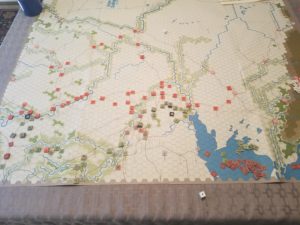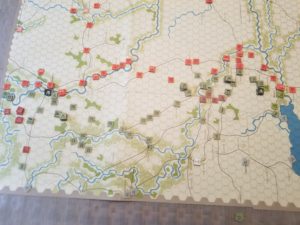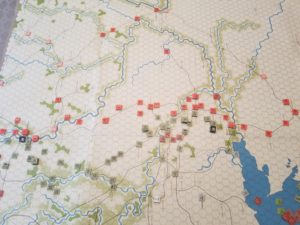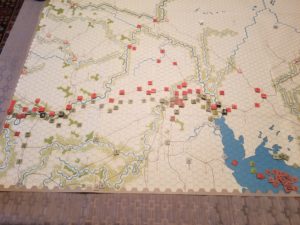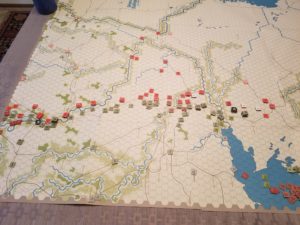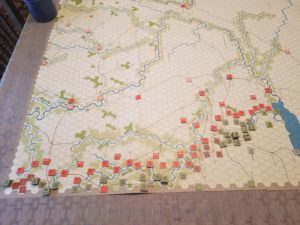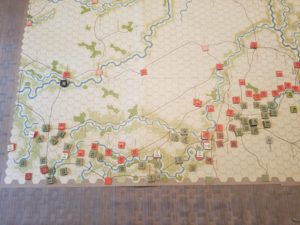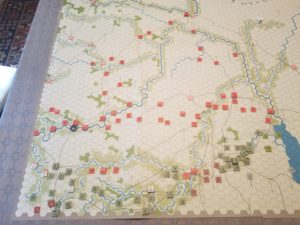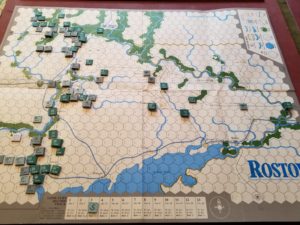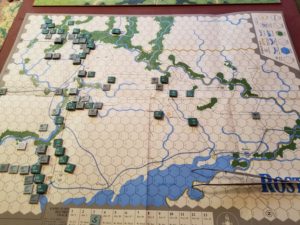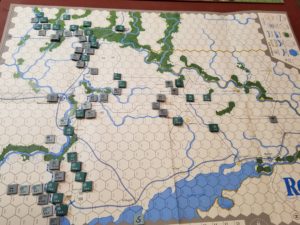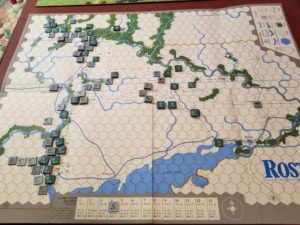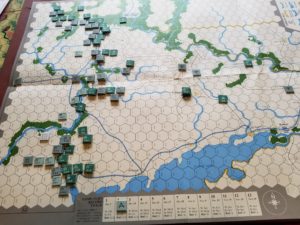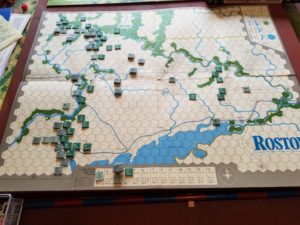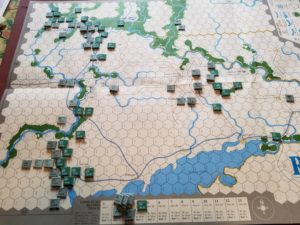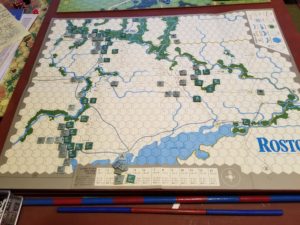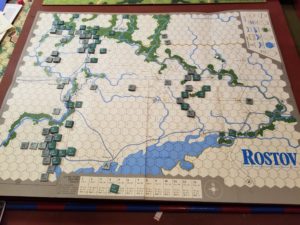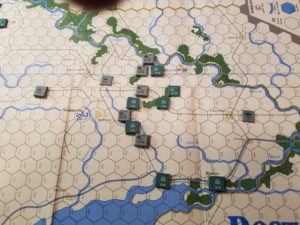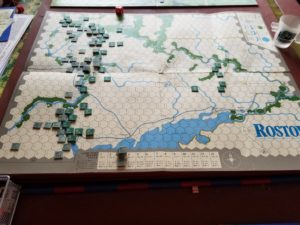Here are Tim’s thoughts:
- As the German, I’m not sure it if is better to do overruns before combat or afterwards. More than once, I had a stack stopped and left out of position for the combat phase when it received an adverse result on the CRT. Maybe overruns are best used to disrupt a key soviet unit (most likely a headquarters unit). I tried that once and it seemed to work well.
- I forgot that ZOC’s don’t extend across the Don (even though you reminded me…probably the beer had an impact…). That explains why I put so much time and effort into that area. I was trying to extricate a couple of motorized divisions that had gotten ZOC’d up and that I wanted to use elsewhere. Just like Hougomont at Waterloo, a subsidiary battle took on a life of its own.
- I belatedly realized that I’d captured Voronezh on turn 2. There are three hexes of Voronezh and I thought you had to capture all of them to get the VPs for the city…I only needed the two I had captured right away.
- The Hitler directives do play a role. I lost a motorized division when I had too many motorized/panzer units in the north and I was reluctant to move units across the Don as I was afraid that a bad die roll would result in them being taken away and sent somewhere else.
- I enjoyed playing the game and I definitely want to try it again.
